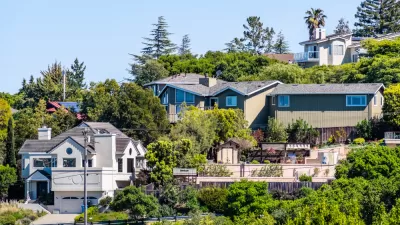A retired city planner takes a position against "lot splitting," or allowing more than one unit on properties zones for single-family residential as it's known in Toronto.

Cherise Burda, of the Ryerson City Building Institute, and David Godley, a retired city planner, contribute dueling opinions in this column on the subject of "lot splitting" for density in the city of Toronto.
"Dividing city lots to build two houses on one property is increasingly common and controversial in Toronto," explains the introduction to the article. "Is this good planning in light of sky high housing prices and a lack of land for development?"
Burda takes the position of proponent for lot splitting, starting with the argument that single-family zoning creates exclusion in a time of declining housing affordability.
"Over the next 25 years we are expecting about 1 million new neighbours. And, over the next 50 years Toronto’s population is on track to double. In simpler terms anywhere we currently have one housing unit we will need two," writes Burda.
The contrarian argument sets to debunk what Godley describes as a myth of land shortage in Toronto.
There are enough housing units approved to last 20 years in Toronto with very large numbers of applications in the pipeline. Theoretically, all the needed housing can be accommodated along main streets. This is the appropriate place for co-ops, plexes and rooming houses, as well as innovative housing. There are large tracts of land with development potential.
The context for the discussion is set by a motion proposed recently by Deputy Mayor Ana Bailão and Mayor John Tory to study opportunities to accommodate new forms of housing in residential neighborhoods. The trend toward limiting or ending single-family zoning has been gaining steam, with a new law in Oregon and a new comprehensive plan in Minneapolis leading the way.
FULL STORY: Is lot splitting a good way to increase housing density?

Study: Maui’s Plan to Convert Vacation Rentals to Long-Term Housing Could Cause Nearly $1 Billion Economic Loss
The plan would reduce visitor accommodation by 25,% resulting in 1,900 jobs lost.

North Texas Transit Leaders Tout Benefits of TOD for Growing Region
At a summit focused on transit-oriented development, policymakers discussed how North Texas’ expanded light rail system can serve as a tool for economic growth.

Alabama: Trump Terminates Settlements for Black Communities Harmed By Raw Sewage
Trump deemed the landmark civil rights agreement “illegal DEI and environmental justice policy.”

How Community Science Connects People, Parks, and Biodiversity
Community science engages people of all backgrounds in documenting local biodiversity, strengthening connections to nature, and contributing to global efforts like the City Nature Challenge to build a more inclusive and resilient future.

Alabama: Trump Terminates Settlements for Black Communities Harmed By Raw Sewage
Trump deemed the landmark civil rights agreement “illegal DEI and environmental justice policy.”

Dear Tesla Driver: “It’s not You, It’s Him.”
Amidst a booming bumper sticker industry, one writer offers solace to those asking, “Does this car make me look fascist?”
Urban Design for Planners 1: Software Tools
This six-course series explores essential urban design concepts using open source software and equips planners with the tools they need to participate fully in the urban design process.
Planning for Universal Design
Learn the tools for implementing Universal Design in planning regulations.
City of Santa Clarita
Ascent Environmental
Institute for Housing and Urban Development Studies (IHS)
City of Grandview
Harvard GSD Executive Education
Toledo-Lucas County Plan Commissions
Salt Lake City
NYU Wagner Graduate School of Public Service





























